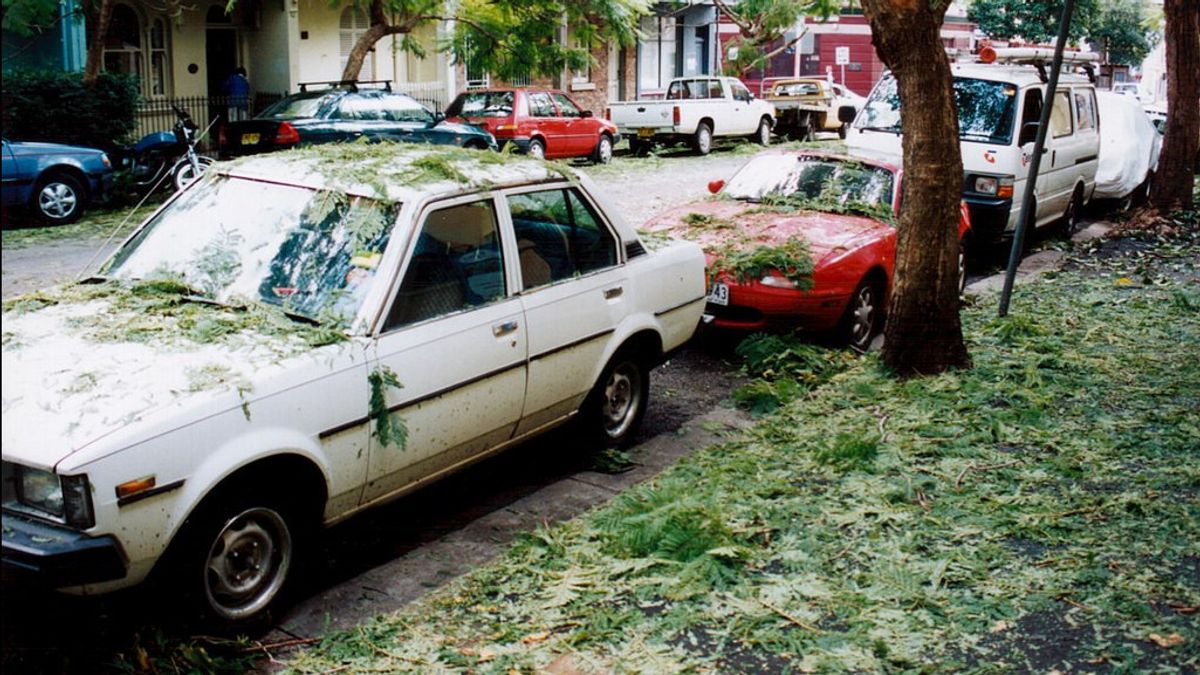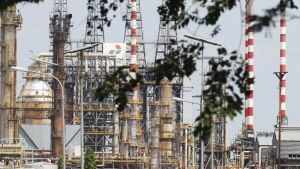JAKARTA - On April 14, 1999, an ice storm hit Sydney. It was the most expensive natural disaster in Australian history.
In the afternoon, the sky turned dark in such a creepy look. That thick cloud turned out to be a sign the storm was coming.
Residents reported they began to hear a mild plume of small ice pellets falling to earth. However, at this early stage the residents barely expected that what they witnessed would turn into an ice storm at a speed of 200 kilometers per hour.

The ice storm provoked a spike in complaints to the Sydney Fire Service Communications Centre. There is one complaint call every ten seconds.
Over the next five hours, more than two thousand requests for help flooded in, meaning the State government was forced to declare a state of emergency. Thousands of tons of ice descended on the city, with a size of ice large enough to be 9x8x8 centimeters.
Instead of hitting harmless water, the ice tore through the roof, damaged the hood of the car, and even damaged the plane. In the end 20 thousand buildings, 40 thousand vehicles, and 25 aircraft were damaged by the hail.
The most expensive storm in Australian historyThe weather in Sydney in April is usually relatively sunny, leaving the Bureau of Meteorology not anticipating such extreme weather. This was seen in the absence of specialist staff on duty.
The storm also defied predictions by moving over downtown, rather than heading out to sea as expected. Visiting WSWS.org, the Bureau of Meteorology issued no warning as hail swept the coast from the industrial city of Wollongong, about 80 kilometres south of Sydney.
People there have been experiencing thunderstorms since 5:30 p.m. But the weather forecasting agency issued no warning at all, even after hail began hitting homes in Sydney's south about 7.30pm.
Asked for an explanation, a Bureau of Meteorology spokesman said only one meteorologist was on duty after 6.40pm. Indeed, early warning will not prevent damage to homes. But early warning will clearly give people time to protect cars, household goods, up to themselves.

Other issues soon came to light. Volunteers believed to be coordinating and providing assistance services, State Emergency Services (SES) are reportedly severely understaffed. Their gear is bad anyway.
Residents whose homes are inundated with ice cannot contact the SES by phone. Until finally two thousand households are still waiting for help. Many of them were eventually given tarpaulins to install their own covers, although there was a danger of crawling on the tile that almost collapsed.
The damage bill stands at $1.7 billion, more than Cyclone Tracy in 1974 or the 1983 fire. Therefore, this Sydney storm became the most expensive natural disaster in Australian history.
Between 1968 and 2005, hail was responsible for more than a third of australia's total natural hazard insurance claims. More than 75 percent of them are in New South Wales.
*Read more information about THE HISTORY OF THE WORLD or read other interesting writings from Putri Ainur Islam.
OTHER TODAY'S HISTORY
The English, Chinese, Japanese, Arabic, and French versions are automatically generated by the AI. So there may still be inaccuracies in translating, please always see Indonesian as our main language. (system supported by DigitalSiber.id)









